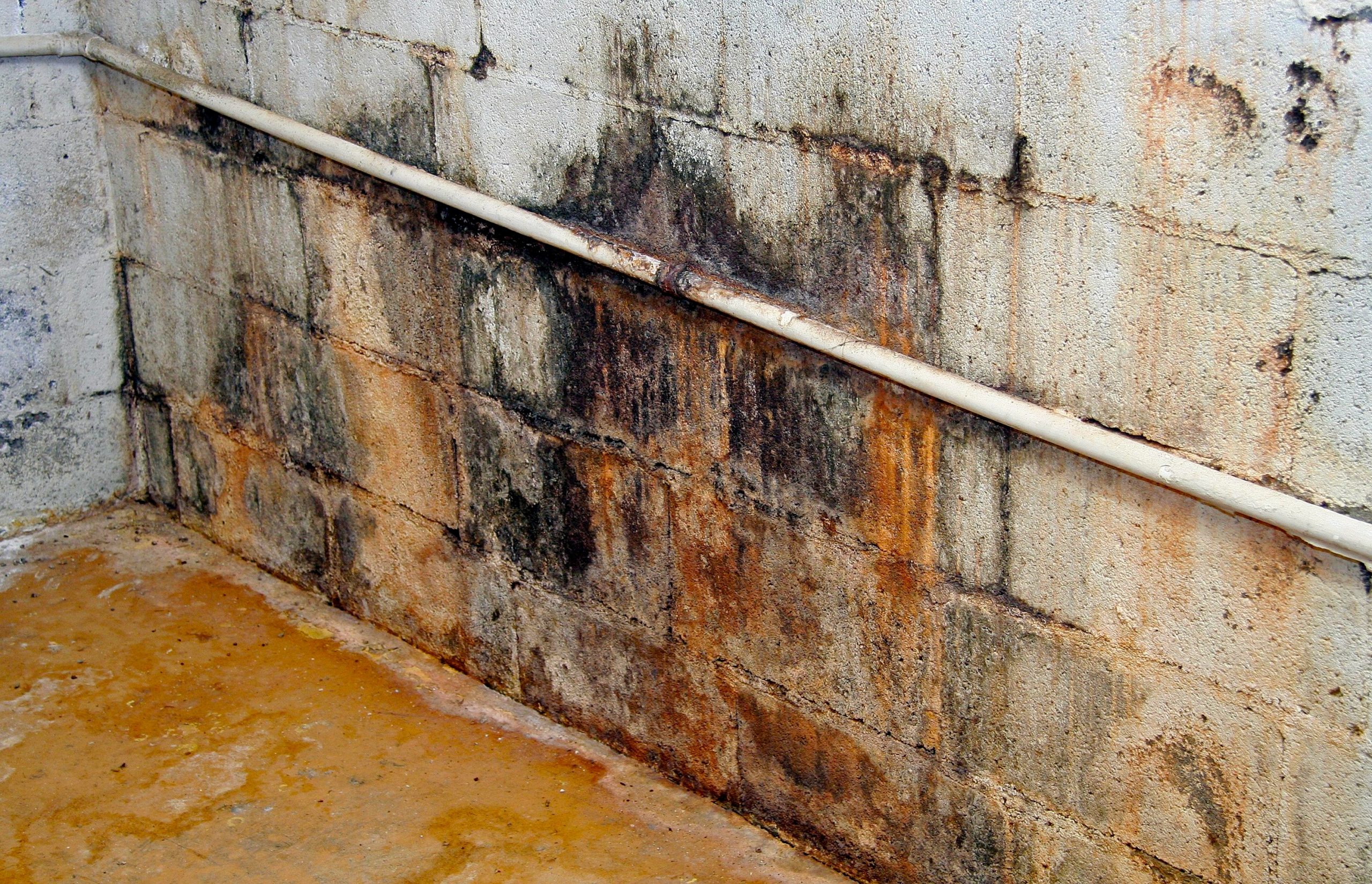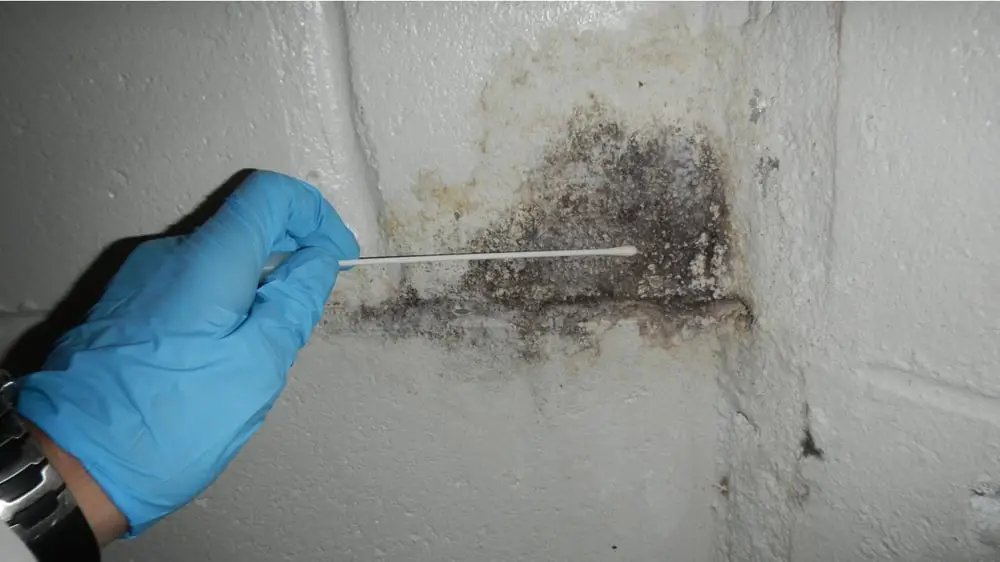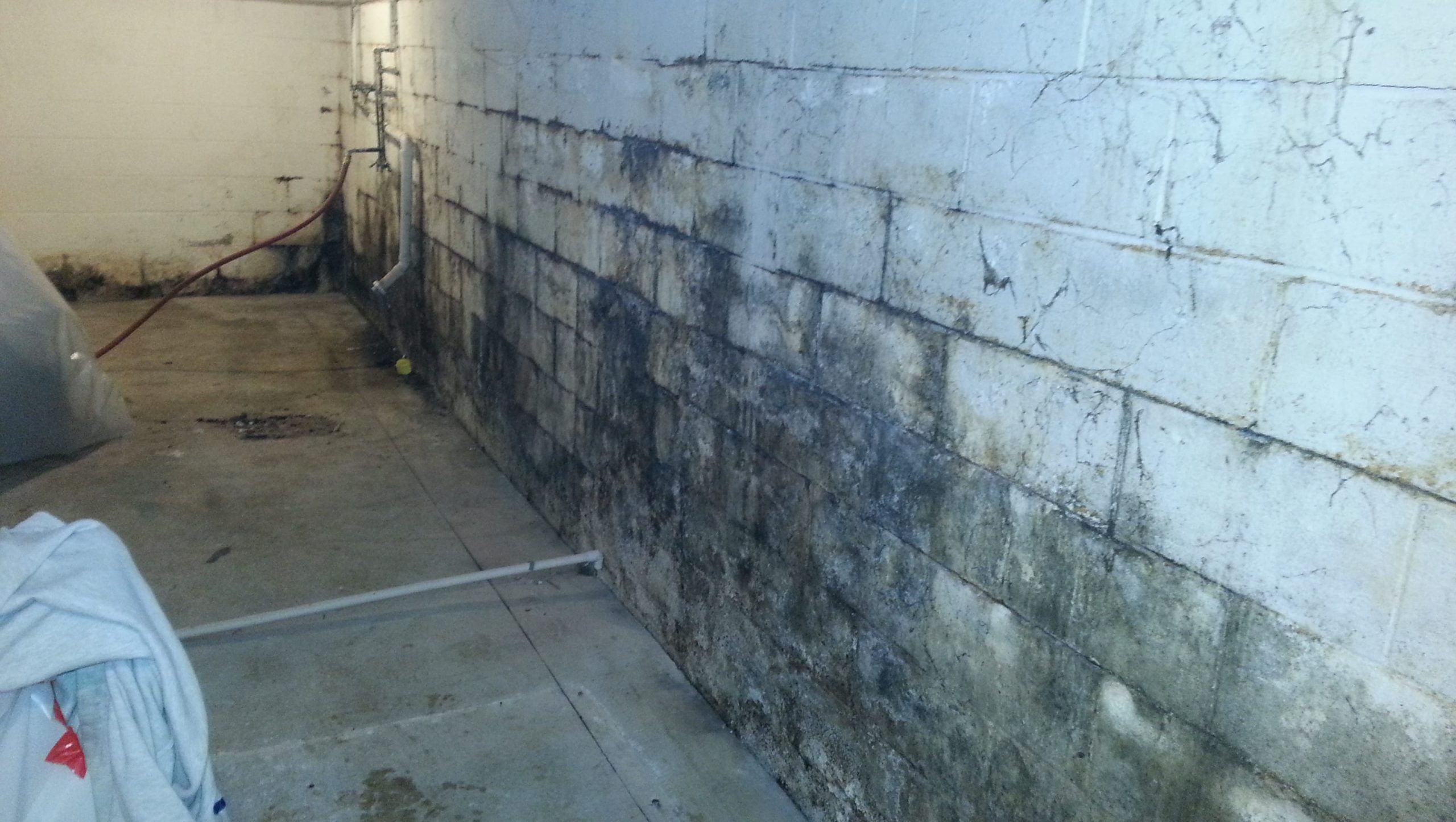Is Basement Mold Normal
Household mold is a fairly common phenomenon. Studies indicate that, nationwide, the number of homes with mold falls anywhere between more than 50%, up to as many as 70%. Whatever the exact number, it is apparent that the majority of U.S. homes are playing host to mold.
As basements tend to be more prone to mold growth than other areas of the home, it is likely that among the many U.S. homes with mold, it would be common to find basement mold.
But while basement mold might be common, that doesnt mean it should be considered normal. In fact, the sight of any mold growing anywhere in your home should raise a red flag.
Despite its relative prevalence in homes across the country, no level of mold growth can be considered normal. The Environmental Protection Agency instructs homeowners who notice mold growing in their property to proceed with removing this mold immediately. There are no thresholds or standards for an acceptable or normal level of mold growth in the home.
Is Green Mold Dangerous
Contrary to popular belief, black mold is not the only harmful mold for people and pets. While black mold may seem more dangerous, its green counterpart is just as likely to cause health issues.
All molds green, black, or other colors can cause health problems, especially in susceptible people. Continuous exposure to mold can affect the respiratory system and trigger asthma attacks and allergens. So yes, if you see green mold, you should remove it as soon as possible.
This kind of fungus can grow anywhere in your home where a water problem has occurred. Check out how to prevent mold in the crawl space, basement, bathroom, laundry room, attic, as well as in houseplant soil, the HVAC system, closets, carpets, and washing machines.
Being Healthy Doesnt Make You Immune
Even if you are a healthy adult, you still need to be concerned about mold-related illnesses. The National Institute of Occupational Safety and Health performed a study on employees working in a water-damaged office building. The results documented a correlation between developing asthma and the increasing mold levels in the building.
You may have few allergies, but long-term exposure can change that. And anyone with asthma will tell you, it is not an illness you want to acquire.
For families with infants and children, the impact of mold spores is more significant. Studies have shown that mold in the household contributed to a number of respiratory disorders in children ages 6-12.
These ranged from allergic symptoms and hay fever to wheezing, coughing, and asthma. Mold exposure during the first year of a childs life can increase their risk of developing asthma.
Recommended Reading: How To Get Mold Off Of Leather
What Does Basement Mold Look Like
Technically, any type of mold can grow in your basement. Without conducting a laboratory test, it can be difficult to determine the exact type of mold that has made its home in your basement.
If you have mold in your basement, it is likely due to water damage or moisture ingress. Household molds that thrive in this environment include Chaetomium, Aspergillus, Alternaria, Cladosporium, Penicillium, and the dreaded Stachybotrys .
These molds will present in a variety of colors and textures. Stachybotrys, although not commonly found in homes, will appear slimy, with a green-black color. Chaetomium and Cladosporium can range in color from white to brown. Alternaria tends towards an olive-green to brown color, and Penicillium is most often found in its distinctive blue-green color.
Aspergillus, which is the most commonly found mold in U.S. households, comes from a very large family, with over 185 different species. As such, Aspergillus can appear in a variety of colors and textures.
Carefully monitoring the walls, floors and ceilings of your basement is one of the best ways to nip any potential mold growths in the bud, regardless of mold type. Just as there is no normal level of household mold, there is no normal allowance for a certain type of mold.
In short: if you see mold, remove it!
Can Sleeping In A Room With Mold Kill You

No, it is not healthy to sleep in a room with mold and mildew. An interior mold of any kind of exposure is something to worry about and mold inside your bedroom is particularly so, simply as a result of the number of hrs you invest in your bedroom breathing it in while you rest. Beyond the instant allergy signs and symptoms, mold and mildew direct exposure usually create rest concerns, too.
Recognize What Are The Symptoms of Mold Exposure
If they enter into contact with mold, they may experience signs and symptoms, such as:
- a dripping or blocked nose.
- a dry cough.
- watery, red eyes.
- an aching throat.
So, how long you can really stay inside a room with mold? 2 days. Also even worse, if you dont take any action the mold will certainly continue growing until actions are taken to get rid of the problem. Drying out extensively may assist avoid prompt and long-term health problems. Permit areas to completely dry a couple of days before replacing damaged products.
You May Like: Black Mold Ac Vents
How To Identify Mold In Your Basement
The first step to victory is knowing your enemy. Certain colonies of mold can be more hazardous to your health than others, and might best be left to the professionals.
As there are tens of thousands of fungi species that beget mold spores, weve narrowed it down to the most likely culprits . Compare your mold to these 12 common genera of fungi:
Create A Bleach Mixture
If the black mold growth in your home is small enough for you to treat alone, a simple mixture of bleach and water can help. Add one cup of bleach to one gallon of water and apply it to the moldy spots. You can also find commercial black mold removal products.
Soak a paper towel in the cleaner and press it over the mold growth to dampen the area. Then start scrubbing. Avoid spraying moldy areas, since the droplets will collide with the mold spores and launch them throughout the room, making them easier to breathe in and harder to eradicate.
Be sure to dry the area thoroughly when youre done.
Do NOT mix bleach with ammonia. This combination can create toxic fumes that are far more dangerous than any mold youre trying to clean.
You May Like: Removing Mould From Bathroom Ceiling
How To Identify White Mold
Most of the time, you can identify white mold by examining its colour, texture, and odour. If it is fluffy, white, slimy and carries a specific musty odour, its likely white mold. Meanwhile, black or olive green discoloration will most likely be black mold.
However, mold doesnt always grow in plain sight, which is why it is important to get your home tested for mold as soon as you suspect a problem.
Is White Mold Dangerous
While mildew and similar types of mold are less of a danger and more of a hindrance, white mold is a health hazard. Inhalation of white mold spores, especially over a long period of time, can cause mold-induced asthma, allergic fungal sinusitis, allergic bronchopulmonary aspergillosis , and hypersensitivity pneumonitis.
Lets look at the health effect of mold in greater detail:
Most white molds tend to be allergenic or pathogenic. However, regardless of the type of mold you find growing in your home, you should always consult qualified professionals about how to remove the mold toxin from your home safely and effectively.
Recommended Reading: Cleaning Mold From Canvas
Look For Grimy Areas Throughout The Basement
Inspect your basement thoroughly. Check its floors, walls, and baseboards for grimy patches. These appear slimy and are often colored black, green, or white with orange hues.
Also, when inspecting for grimy areas, look for stains with a yellowish tint. Thats because this is a sign of mold growth. Under ideal conditions, it can take between 1 to 2 days for mold to germinate and spread.
Its spores start to colonize within 3 to 12 days and become visible in surfaces around 18 to 21 days.
Is Mildew In My Basement Dangerous
Do you have concerns about the health of your Eastern Shore home after discovering mildew? If you recently became aware that mold or mildew was lurking in the basement of your Maryland home, chances are you smelled it before you saw it, and maybe experienced other symptoms too.
Are your allergies worse at home? Do you or a loved one struggle with symptoms of asthma that are worse in your home? Its possible that mildew could be the cause.
Ready to learn how to control mildew in your damp basement? Mold and mildew are symptoms of high humidity, and controlling humidity levels within your home is the first step toward solving your mildew problem.
Read Also: Mold On My Ac Vents
What Does White Mold Look Like
White molds can either remain white or change to green, black, grey, or practically any other colour over time.
When they first develop, white molds are very hard to detect since the spores are so tiny that they can only be seen under a microscope. Once colonies form, however, white molds appear as spots on a surface. They can be flaky, powdery, stringy or filmy at first glance. They can also resemble mildew, which is the early stages of mold. However, mildew is relatively harmless when compared to white mold, which can grow not just on surfaces but also deep within organic materials.
A Qualified Environmental Lab Took Samples Of The Mold In My Home And Gave Me The Results Can Cdc Interpret These Results

Standards for judging what is an acceptable, tolerable or normal quantity of mold have not been established. Sampling for mold can be expensive, and standards for judging what is and what is not an acceptable quantity of mold have not been set. The best practice is to remove the mold and work to prevent future growth. If you do decide to pay for environmental sampling for molds, before the work starts, you should ask the consultants who will do the work to establish criteria for interpreting the test results. They should tell you in advance what they will do or what recommendations they will make based on the sampling results. The results of samples taken in your unique situation cannot be interpreted without physical inspection of the contaminated area or without considering the buildings characteristics and the factors that led to the present condition.
Also Check: Mold Growing On Ceiling In Bathroom
How Does Black Mold Get Inside A House
Mold spores find their way inside by hitchhiking on clothes, pet fur, and air currents into your home. But spores cant get comfortable without plenty of water. This is why youll usually find black mold around water-damaged areas impacted by plumbing issues like floods or leaky pipes.
Materials like drywall, carpet, or gypsum board can soak up water, creating a perfect home for a black mold colony. If you find water damage at home, its crucial to remove all the affected materials to prevent mold from growing.
A water leak sensor can alert you to leaks in hard-to-reach places where the water damage would otherwise go unnoticed.
When To Call A Professional To Get Rid Of Mold In Your Basement
Most basement mold cases are easy to tackle with the methods discussed in this guide, but major problems like hidden moisture leaks, floods, or ruptured pipes can lead to an explosion of mold growth in materials that have to be replaced. When you experience widespread mold, the job is better left to a mold remediation specialist.
Companies that maintain an American Council for Accredited Certification mold certification have the qualifications to safely remove moldy material and remediate mold on surfaces that cannot be replaced. Many of these businesses also specialize in basement encapsulation to prevent further problems from mold in basement areas.
You May Like: Cleaning Mold Off Plastic
What Causes Mold To Grow In Basements
Mold loves temperatures between 60 and 80 degrees F, a little bit of moisture, some tasty surfaces to feed on, and plenty of room to growall of which the average basement supplies readily.
You can have issues with mold after a small leak, say, from a water heater or bathroom, rain coming in a basement window after a big storm, a major flood event, an overwatered plant pot, or even just due to an excess of indoor humidity.
Is Resting Beside Mold Bad For Your Health
Direct exposure to mold or wetness in your home has been associated with adverse respiratory results in all age groups. This direct exposure has actually likewise been connected to sleeplessness in adults. We aimed to explore the association between direct exposure to visible mold or wetness at home and also sleep problems in children.
You May Like: Ultraviolet Light Kills Mold
White Mold On Carpets
As most of us know, wet carpets are very difficult to dry, especially when were talking not just about a small spill, but a large leak or flood. This is when bacteria and mold have the opportunity to thrive. It is important to avoid carpeting your home below ground level or in rooms that are prone to spills, high humidity, and flooding . Luckily, moldy carpets are fairly easy to recognize as they will give off a strong musty odor and cause allergic reactions. Try to clean and dry wet carpets promptly in order to avoid mold spreading to the subfloor. If this happens, you will likely have to remove and replace your entire flooring system.
How To Differentiate Between White Mold And Efflorescence
White mold and efflorescence look a lot alike. In fact, theyre so similar that people often mistake one for the other. Both are white in colour and found on walls and other building materials. Understanding what both substances are and how they form will help you to determine which one is making an appearance in your home.
So what is efflorescence? Simply put, efflorescence is salt deposits commonly found on concrete and brick. It develops when water evaporates from concrete or brick, and leaves behind a salty residue on the surface of the material. However, efflorescence causes only cosmetic damage and will not threaten the structural safety of your home. Likewise it also doesnt pose any risk to your health.
Tips for distinguishing between white mold and efflorescence:
- Efflorescence dissolves in watermold does not
- Efflorescence is typically found on concrete and brick while mold grows on organic materials like wood and drywall
- White mold is a living organism while efflorescence is simply salt deposits
- Efflorescence is not harmful. It wont make you sick, but white mold will.
- White mold gives off a distinctive odour while efflorescence not.
You May Like: Diy Basement Mold Removal
What Causes White Mold
Like other molds, white mold grows due to high moisture levels combined with the presence of a food source, and the right temperature. Common food sources for white mold include wood, drywall, carpeting, laminate, insulation and any other organic, carbon-rich material.
The best temperatures in which mold grows is between 2 and 40 degrees Celsius.
As white mold spreads, it eats away at the material it is growing on. If this happens to be drywall or wooden beams, white mold can lead to both cosmetic and structural damage of your home.
White Mold Under Floorboards

Have you ever perceived a musty odor somewhere around your home floorboards? Thats a sign that your wooden floor is growing mold under perfect conditions. Several mold testing results reveal that the most commonly found fungus under the floorboards is white mold.
Its not strange that white mold can grow under floorboards. It can be tricky in its early stages of development and become unsightly under your flooring for quite some time. Over time, the smell will aggravate and make residents start sneezing and coughing.
You need immediate mold remediation to keep your floorboards from damaging and protect the lives of your family.
Also Check: What Causes Mold On Ceiling
Healthy Home Myths Debunked
Basement mold is often the result of a source of moisture leaky foundations or condensation from appliances are typical culprits. One of the first steps in the prevention of basement mold is to ensure that your basement is free of any moisture and doesn’t support a damp, humid environment where mold can thrive.
If mold in the basement is already a problem in your home, there are many options for the control and removal basement mold. Depending on the extent and severity of the problem, and the type of mold, you may need to explore options for professional mold removal. In particular, cases of severe toxic black mold growth may require professional care.
For nontoxic species of mold and less severe mold growth, there are many DIY solutions for the prevention and control of mold in the basement. After removing any mold-covered debris, such as dry wall, insulation, carpet or sub-flooring, hard surfaces can be treated with commercial products containing ammonia and bleach. Basement mold removal on tile or linoleum can also be performed with vinegar or a borax and water solution.
Mold in the basement is a common problem, but by understanding how to identify problem areas and prevent and control mold growth, you can avoid the potentially costly and unhealthy spread of basement mold.
